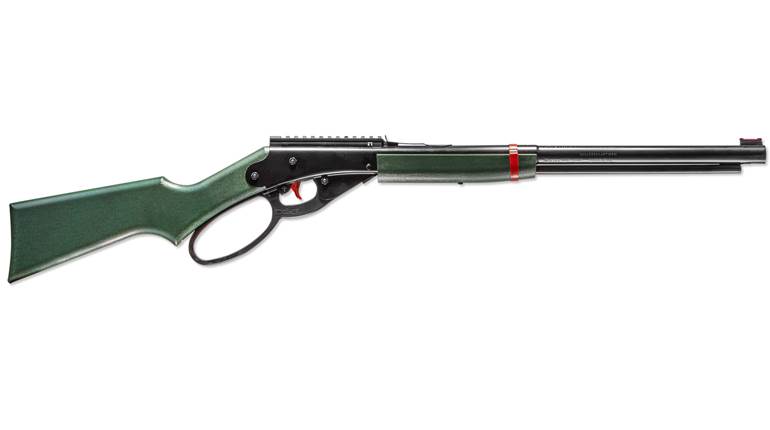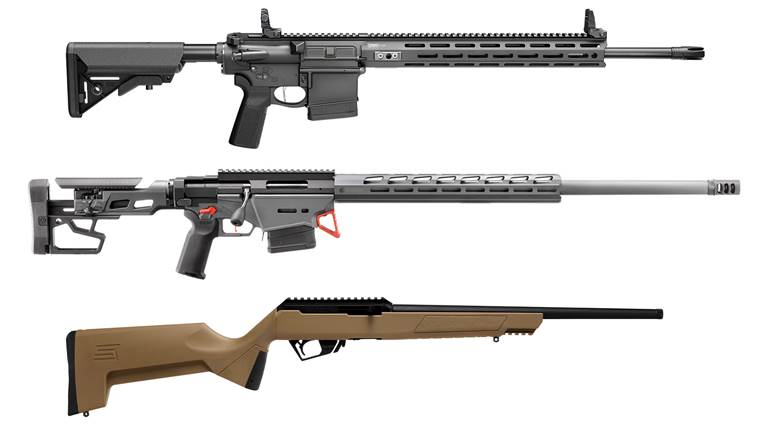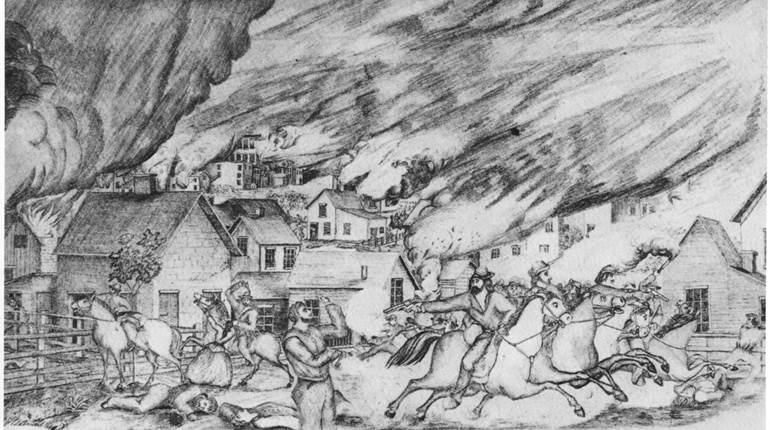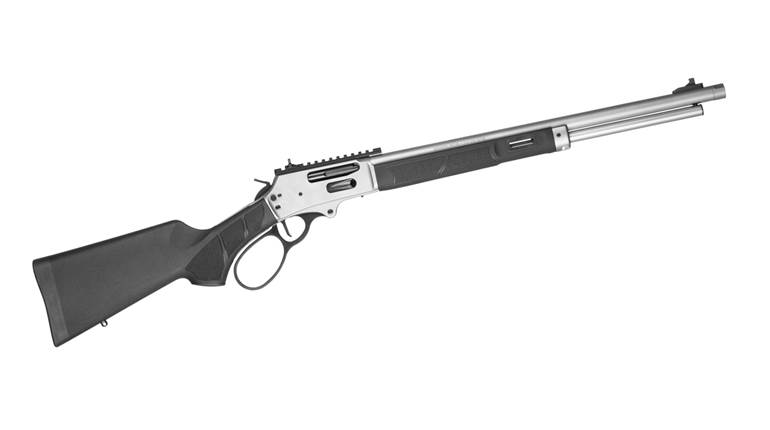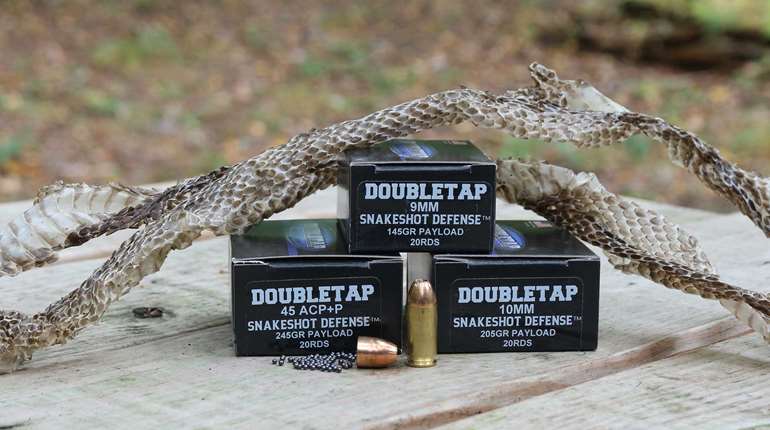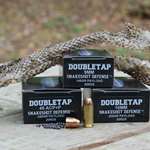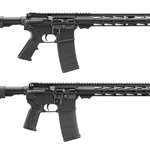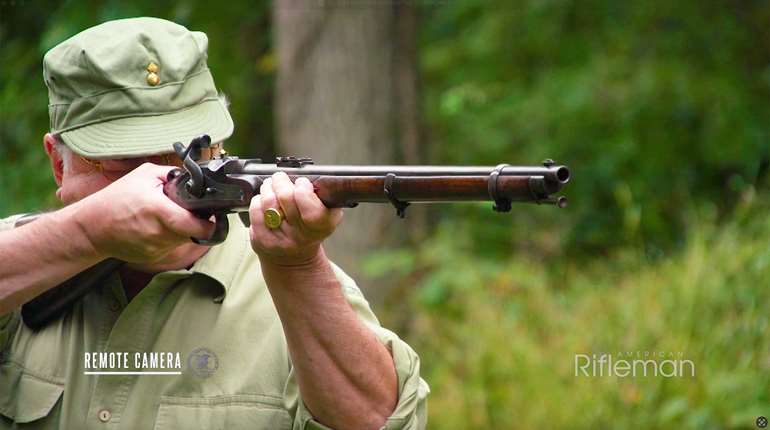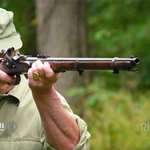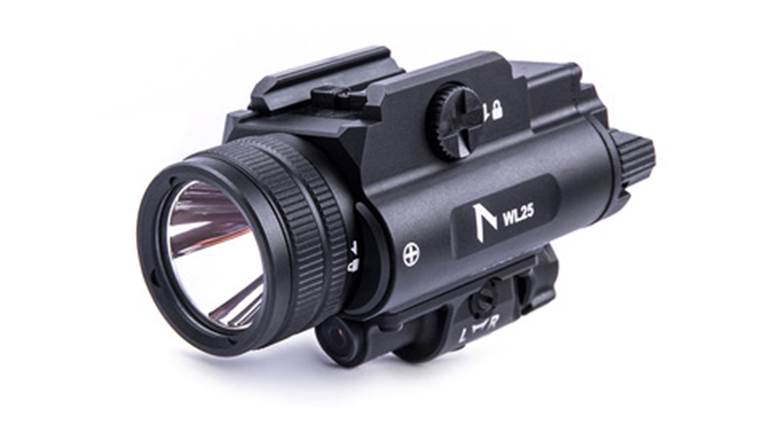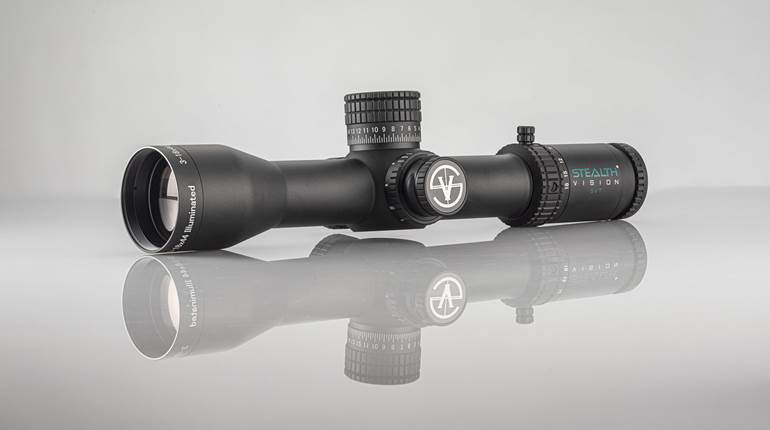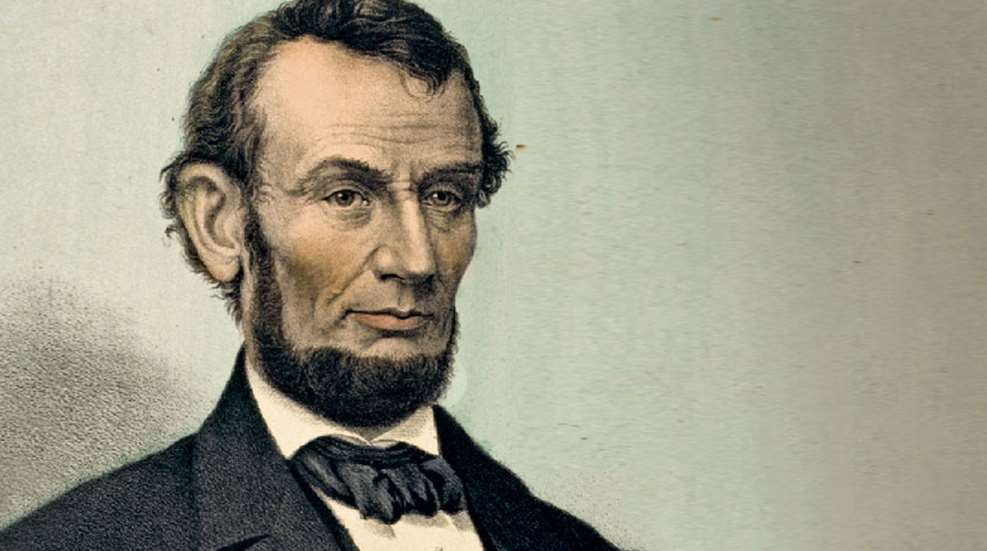
In 1863, upon being directed by the president to conduct experiments with a new type of firearm, the head of the Union’s Ordnance Dept. sneered, “What does Lincoln know about a gun?” Little did the functionary know that the president, in fact, knew quite a lot.
In December 1816, Lincoln’s family left Kentucky for Indiana’s greener pastures—not that they found them. Instead they encountered “a wild region, with many bears and other wild animals still in the woods,” Lincoln later wrote. For protection and sustenance, the Lincolns owned an old smoothbore musket and two rifles. When, a few months later, the boy saw a flock of wild turkeys gingerly approach the family’s new cabin, he selected “a rifle gun,” and, “standing inside, shot through a crack and killed one of them.”
Modestly explaining that his hunting skills “never much improved afterwards,” Lincoln preferred to leave deer and bears to his friends. Instead, contenting himself with turkeys and raccoons, Lincoln and his kinsman Dennis Hanks hunted “pretty much all the time especially so when we got tired of work, which was very often I will assure you,” Hanks recalled. As he got older, Lincoln cut back on the hunting to spend more time with his beloved books, which was presumably the reason he and another friend once walked into town to buy a rifle and agreed to share it.
For a short time in 1832, Lincoln served in the militia during the Blackhawk War. Considering his later role as a warlord, Lincoln’s inept turn as an officer is entertainingly ironic. Placed in charge of a company composed of, in the words of Maj. William Miller, “the hardest men he ever saw,” poor Capt. Lincoln was neither feared nor respected. To his first order to drill, one man replied, “Go to hell,” and he soon gained a reputation for incompetence. Another time, his men “liberated” the officers’ whisky supplies. Early the next day, as their brother companies formed up and marched away, Lincoln’s boys were too sodden to even stand. At his subsequent court-martial, Lincoln was ordered to carry a wooden sword. Soon afterward, the militia, with no little sense of relief, mustered him out. Although Lincoln’s soldiering career could not be described as stellar, the experience did extend and expand his acquaintance with various forms of military arms

Henceforth, he kept abreast of ordnance developments. In the 1850s he knew, from his copies of the Annual of Scientific Discovery, of the roiling debate between advocates of the new breechloaders and those of the more traditional muzzleloading rifle-muskets. Indeed, later that decade, when Lincoln discovered that his business acquaintance George McClellan had recently been part of an influential military commission to Europe, he quizzed him mercilessly about modern armaments. And as a voracious reader, Lincoln devoured the many in-depth reports in The New York Times and Scientific American covering arms trials and Ordnance competitions to determine the best method of converting muzzleloading firearms into breechloaders.
Underlying Lincoln’s interest in gun technology was his insatiable curiosity about all things mechanical. Indeed, he remains the only president to have a patent—for a device to buoy vessels over sandbars—in his name. According to William Herndon, his longtime law partner, Lincoln wanted to know every machine “inside and outside, upside and downside.” Another of Lincoln’s colleagues, Henry Clay Whitney, recalled his friend’s inquisitiveness. While traveling together, whenever they stopped at a local farmhouse for dinner, Lincoln would obtain some “machine or tool, and he would carefully examine it all over, first generally and then critically; he would ‘sight’ it to determine if it was straight or warped; if he could make a practical test of it, he would do that; he would turn it over or around and stoop down, or lie down, if necessary, to look under it; he would examine it closely, then stand off and examine it at a little distance; he would shake it, lift it, roll it about, up-end it, overset it, and thus ascertain every quality and utility which inhered in it.”
From such careful investigations, Lincoln’s mind would penetrate the very nature of things, allowing him to perceive the fundamental cause-and-effect principles upon which they relied to work. Such understanding was central to his belief that free societies were more innovative than enslaved ones, for the former sought to improve technology to reduce toil, raise profits and improve efficiency, but the latter’s intellect and energy were smothered by the dead weight of tradition and the dust of ages.
Lincoln’s linking of technology with liberation inspired him to be ever on the lookout for better and more innovative guns with which to arm Union soldiers. The greatest obstacle to his ambitions was the Ordnance Dept., or more particularly, Gen. James Ripley, its chief. Ripley, famous for his absolute incorruptibility, starchy bearing and unyielding adherence to the rules, dreaded the president’s inquiries about new types of firearms. To his mind, his job was to increase the North’s output of working, easy-to-use, standardized, muzzleloading Springfield rifle-muskets for use by the hundreds of thousands of troops in the field, not to waste time on Lincoln’s latest fancy.

Ripley performed admirably in arming the Union, but he was wrong to quash small-arms innovation, and Lincoln was right to try promising guns that attracted his eye. He proved particularly interested in the experimental lever-action repeating rifles firing the new metallic cartridges that some dared believe would displace traditional ramrod-and-ball loading. The two leading repeater companies were Oliver Winchester’s New Haven Arms Co. (which made the Henry rifle) and Christopher Spencer’s Repeating Rifle Co. (home of the eponymous rifle). Representatives of both firms had previously approached Ripley only to be told (in Winchester’s case) that the Henry was useless, despite its “singular beauty and ingenious design,” and (in Spencer’s) that his wasn’t the kind of weapon “which I would be willing to adopt for the military service.” To his mind, they were underpowered (the Springfield caliber was the potent .58; the repeaters’ were either .44 or .52), wasteful of ammunition, and impossible to manufacture in great quantity.
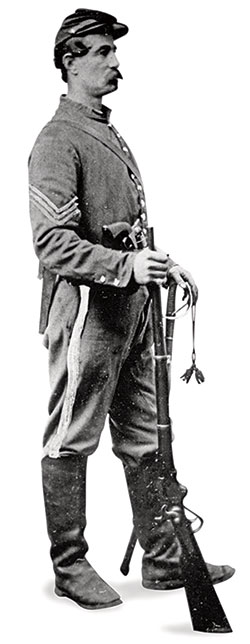
Lincoln wanted to see for himself, though his personal view was that the single-shot breechloader would be the army rifle of the future. (As indeed they would be, evidenced by the adoption of the “Trapdoor” Springfield). And so it was that, in the summer of 1861, the president and his private secretary, William Stoddard, tramped across the White House south lawn for some shooting practice. Lincoln carried a very early prototype Henry, and Stoddard a Springfield rifle-musket specially modified into a breechloader. At the bottom of the lawn there was a patch of ground picturesquely called Treasury Park, though it wasn’t so much a verdant Eden as weedy, gravelly turf enclosed by a wooden fence and dominated by a large pile of lumber that Lincoln used as a backstop for shooting.
Having set up a target against the woodpile, Lincoln and Stoddard took their positions 100 yds. away. Lincoln fired, missing. Stoddard fired and hit. “I declare, you are beating me,” said Lincoln. “I’ll take a good sight this time.” Hearing shots in the middle of Washington, where discharging firearms was banned, a passing sergeant and his men appeared shouting, “Stop that firing! Stop that firing!” Seeing the president, the sergeant stopped short, did a comical double-take, and rapidly withdrew. “Well,” remarked Lincoln, “they might have stayed to see the shooting.”
Two years later, Lincoln heard that Spencers, often privately purchased despite their dearness, were, like Henrys, more than twice as expensive as standard Springfields, costing the average soldier four months’ pay. But they were becoming popular thanks to their ability to rattle the enemy with rapid fire. One Southern lieutenant, taken prisoner, asked his Spencer-armed captors, “What kind of Hell-fired guns have your men got?” And Col. George Custer remarked that if his entire command were armed with Spencers he would not hesitate to charge the rebels even when outnumbered two to one. This was something of an irony, given that at the Little Bighorn, most of the charging Indian warriors who used repeaters carried Winchesters.
Intrigued, the president requested that one be sent to the White House. Unfortunately, it was defective and so too was its replacement, prompting the president to dismiss the gun as fatally flawed. In mid-August 1863, hoping to salvage the situation, Christopher Spencer himself came to demonstrate the firearm. Betraying his curiosity in all things mechanical, Lincoln asked to be shown “the inwardness of the thing.” So Spencer took the piece apart and screwed it back together, delighting the president. Spencer then accompanied the president, Lincoln’s son Robert and his secretary John Hay to Treasury Park. They set up a wooden plank three feet long and six inches wide to use as a target. Lincoln took the first shot, from 40 yds. away. It hit 5" below, and somewhat to the left, of the bullseye. His next hit the spot, and by furiously working the lever, he rapidly placed five more in the neighborhood. “Now,” he said, “we will see the inventor try it.” Spencer then performed, in Hay’s words, “some splendid shooting,” and beat the president’s score. Lincoln, amused, defended his inferiority by remarking that Spencer was younger than he. Then Hay had a try, but his efforts were “lamentably bad.” Being younger than both, he blamed his poor eyesight.
Bidding farewell to Spencer, Lincoln gave him the riddled target, saying that “it might be a gratifying souvenir.” (In 1883, Spencer donated it to the Lincoln collection in Springfield, Ill., but it was subsequently lost.) In his diary, Hay echoed his boss’ thoughts on the Spencer: “A wonderful gun, loading with absolutely contemptible simplicity and ease with seven balls and firing the whole readily and deliberately in less than half a minute.”
The most immediate and important result of the Spencer test was that Lincoln ousted Ripley from his post, for it was now clear that the chief had been foot-dragging since the beginning. Henceforth, federal procurement of Spencers (mostly in a carbine version for cavalry) quickened and eventually amounted to roughly 100,000 pieces. Although the exact number is debatable, this increase was owed less to any direct intervention on Lincoln’s part than to Ripley’s successors believing that muzzleloaders were on their way out, destined to be replaced by breechloaders—a category that included not only lever-action repeaters but single-shot rifles. Moreover, this figure is dwarfed by the more than 1.5 million Springfields manufactured during the war.
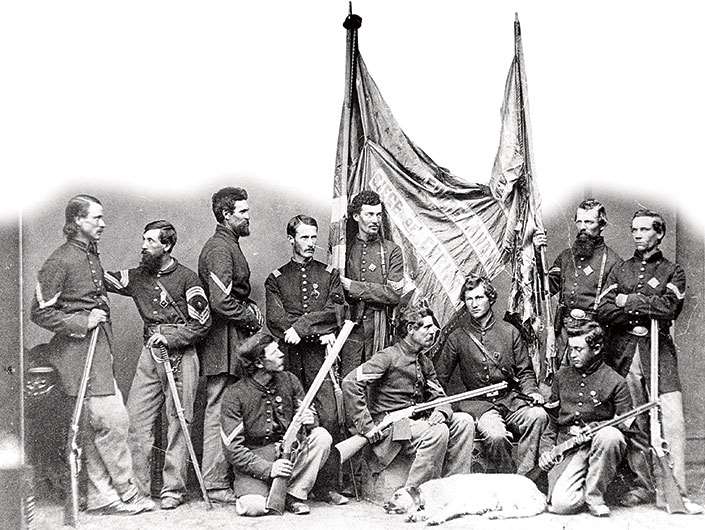
In the end, Spencer’s success did not save his company. After Appomattox, demobilized soldiers brought their arms home. Since their wartime Spencers worked so well—no less a personage than Gen. Grant declared them “the best breech-loading arms available”—they saw no need to upgrade them with new models. In 1868-69, the firm, flailing in debt, was wound up. Winchester bought its remaining assets for the knockdown price of $200,000. Even so, for decades one could see Spencers in action everywhere on the frontier.
Unlike his rival Christopher Spencer, Oliver Winchester had not had a good war. Despite Lincoln’s admiration for his Henry rifle, just 1,781 of them were sold to the Ordnance Dept. Nevertheless, several thousand more were bought unofficially by various units and used with great success. In February 1863, for instance, Capt. James Wilson of the 12th Kentucky Cavalry was attacked by seven Confederates; he rapidly killed them all in eight shots—an impossible feat for anyone armed with a regulation Springfield.
Understandably then, as early as mid-1865, Winchester—irritated by Spencer’s success as well as provoked by an attempted boardroom coup by the rifle’s disaffected creator Benjamin Henry—had begun thinking about phasing it out and forging ahead with an improved replacement. Within the year, the newly dubbed “Winchester” Model 1866 went into production. It would be the first of the company’s phenomenally successful and rightly legendary family of guns.
Thus, in the final reckoning, Lincoln’s rifles may not have won the Civil War, but they aided immeasurably in subduing the American West.
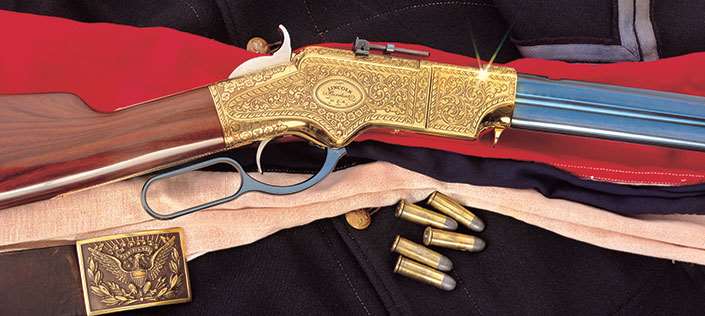
Shooting A National Treasure?
The Henry rifle presented to President Abraham Lincoln is currently on display at the National Museum of American History’s Kenneth E. Behring Center as part of a new exhibit entitled “Abraham Lincoln: An Extraordinary Life.” If your travels bring you to Washington, D.C., plan to visit the museum (www.americanhistory.si.edu) to see this national treasure.
But the folks at the Smithsonian might not have a sense a humor about being asked to handle or shoot it. Years ago Bob Buerlein of the American Historical Foundation set out to recreate the Lincoln rifle based upon measurements and photographs. In this, the bicentennial of Lincoln’s birth, the AHF has released a firing replica built on a .44-40 Win. Uberti with faithfully replicated engraving of the Henry repeater in the Smithsonian’s collection, right down to the “A. LINCOLN President U.S.A.” on the receiver flat. The receiver and buttplate are plated in 24-karat gold, and are hand-engraved. The edition is limited to 250 guns, which cost about $5,000 each.
Although Oliver Winchester never presented one to him, there was also a Jefferson Davis Henry offered by the AHF.












